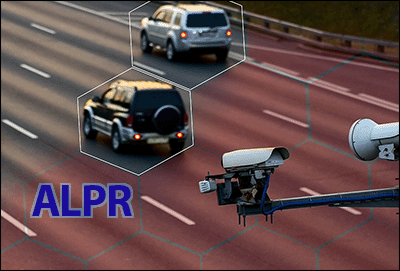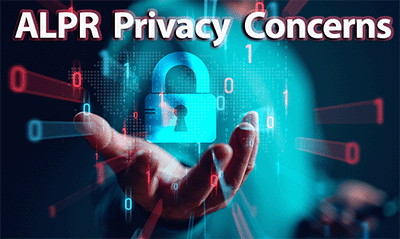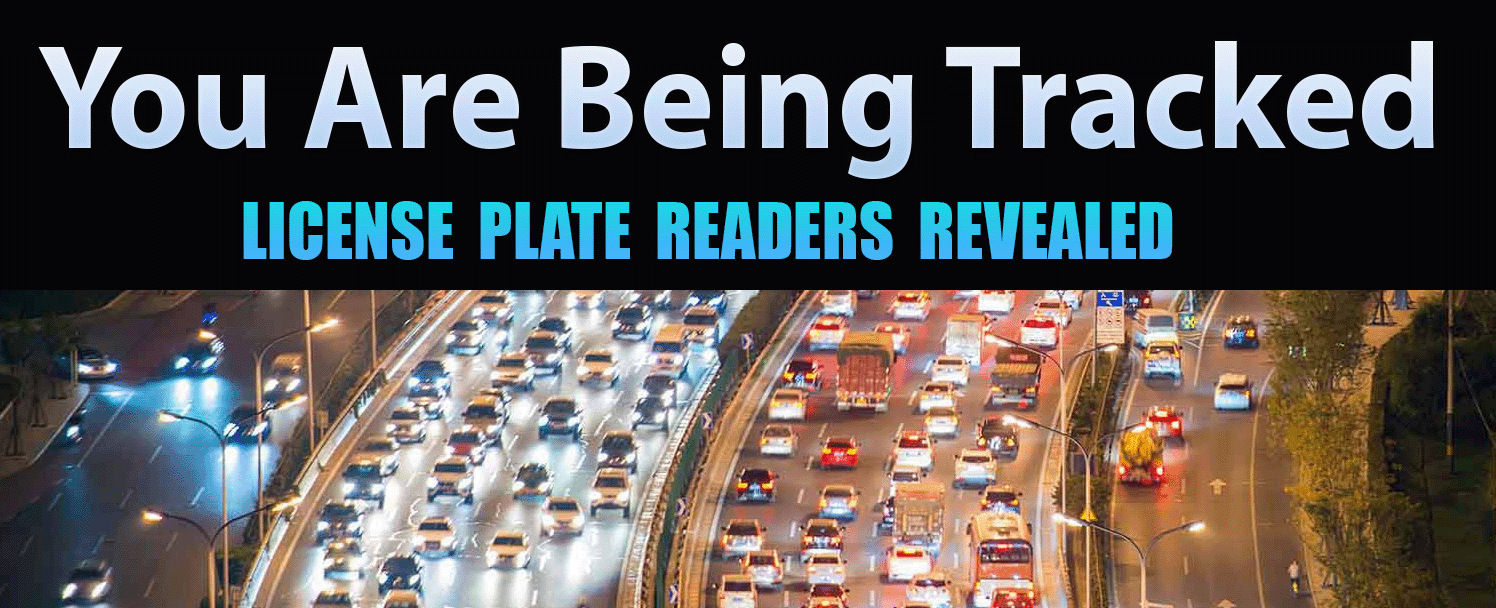Understanding License Plate Readers
Automatic License Plate Readers and Their Role in Society
Automatic License Plate Readers, or ALPRs, have changed how vehicles are monitored on the road and in public spaces. APLRs are advanced camera devices that use optical character recognition (OCR) to scan, interpret, and record license plate characters from passing vehicles, or public parking spaces. These advanced camera systems are currently used across the entire United States, as well as many other countries. They are primarily used by various government agencies and private entities, which include law enforcement, toll operators, parking management services, and private businesses. ALPRs offer a streamlined mechanism of monitoring vehicles which saves an enormous amount of time and paperwork, as well as removing the human component that can occasionally lead to errors. However, their increasing use in the United States has brought forth concerns over privacy rights and data management practices. This article will provide a comprehensive overview of ALPRs, their functions, uses, benefits to law enforcement and public safety, as well as the privacy concerns associated with them.
How an Automatic License Plate Reader Works
The technology behind an ALPR system is a combination of hardware and software components working together to identify, record, and store data on license plates. The ALPR hardware is part of the equation, which is the advanced camera system that captures vehicle license plates. The software, is the second part of the equation, which uses various proprietary algorithms and techniques to accurately identify license plate characters from the captured images.
Hardware: The hardware usually consists of high-speed cameras equipped with infrared filters to read plates at all times of the day and in different weather conditions. These cameras can be mounted on stationary traffic lights, streetlights, overpasses, parking lots, hand-held, or mounted directly on law enforcement vehicles. Some of the more advanced ALPR cameras have the ability to monitor many vehicles simultaneously, which is very helpful in high traffic areas.
Software: The software uses an optical character recognition software (OCR), which interprets the numbers and letters on the license plates captured by the cameras. The software is trained to recognize characters from different fonts and design layouts that may exist on plates from different states. Once the license plate image is captured and the characters interpreted, the ALPR system then timestamps and geotags the data. Timestamping and geotagging are very important components of the license plate reader system that allows law enforcement to track vehicles in real-time. The timestamp indicates the date and time when the plate was captured on camera, which can help to track vehicle movements. Geotagging assigns a geographical location to each captured plate, allowing law enforcement agencies or other authorized entities to determine where the plate was spotted. This data is then stored in a database for future reference, or it can be used in real-time when law enforcement is in pursuit of a vehicle.

Various Uses of License Plate Readers
ALPRs have the ability to quickly capture and process license plate data and utilize it instantaneously. There are a multitude of uses for ALPRs including; law enforcement, traffic management, parking enforcement, locating missing persons, and finding a stolen vehicle.. Here are some more details on their specific uses:
Law Enforcement: Police departments, and various law enforcement agencies, utilize ALPRs to enforce traffic laws, identify stolen vehicles, find missing persons, and aid in investigations by providing real-time and historical location data of a vehicle. An ALPR system that is integrated with law enforcement centralized database, can alert officers in real-time if a scanned license plate is linked to a crime or is registered to a person or vehicle of interest. It creates a streamlined system of interaction between the APLRs and law enforcement agencies, and their criminal databases. This is much faster and more efficient than the legacy method of a police officer calling in a vehicle plate and waiting to get a response from their central dispatch.
Traffic Enforcement: ALPRs also play a role in enforcing traffic laws and issuing traffic citations. They can identify vehicles that are registered as uninsured or have expired registrations, aiding in traffic enforcement efforts. Additionally, ALPRs can be used to locate vehicles involved in hit-and-run incidents or other crimes, providing crucial leads for investigations. They can also offer real-time interactions with law enforcement to find people actively fleeing an accident or crime scene.
Toll Collection: ALPRs have revolutionized toll enforcement and their system of collecting toll fines. They offer enhanced efficiency, help to reduce traffic congestion at the toll pay-lines, and improve overall driver experience on toll roads. By leveraging ALPR technology, toll operators can automate the process of identifying vehicles and collecting toll fees, eliminating the need for physical toll booths and manual transactions. These toll-road license plate readers are strategically installed at toll plazas, bridge crossings, or other designated areas where vehicles pass through so drivers never need to stop and pay manually, once they are registered with the state or local toll-roads.
Parking Enforcement: Public and private parking authorities use ALPRs to enforce parking rules and regulations. They can quickly identify vehicles that have overstayed their paid time or those that are illegally parking. ALPR technology has transformed parking enforcement by automating the process of monitoring parking facilities. ALPR-equipped vehicles can quickly scan license plates in paid-public parking lots, or on public streets, to check if vehicles have exceeded their paid-parking time or violated parking regulations. This enables parking authorities to efficiently enforce parking rules, issue citations, and ensure fair use of parking spaces.
Missing Persons: In a missing person case, an Automatic License Plate Reader can assist by recording the locations where specific license plates were last detected with a timestamp along with geolocation. This data can help trace the movements of a missing person’s vehicle, potentially leading to their recovery or providing valuable information for investigations. Law enforcement also has the ability to track in real time, which can greatly aid in the recovery of a missing person that is on the road. This is very important since the FBI reported over 500,000 missing persons in the United States in 2022. Time is of the essence, and most successful missing persons recoveries take place within the first 72 hours. After that, the chances of recovering someone who is reported missing greatly diminishes.
Private Use: License Plate Readers are not limited to law enforcement and government applications, private businesses and individuals also utilize it for various purposes. For example, repossession companies use license plate readers to locate vehicles that are due for repossession, streamlining the process and increasing efficiency and recovery. Many residential communities use license plate readers for access control, allowing authorized vehicles to enter while preventing unauthorized vehicles from entry. However, one caveat to private usage is there is less oversight and regulation with how the collected data is stored. Most of the ALPR regulations were created for how government agencies use and store the data.
The History of Automatic License Plate Readers
License plate readers were invented in 1976, by the Police Scientific Development Branch. in the United Kingdom, they were first deployed there in the early 1980’s and became a huge hit after detecting a stolen car in 1981. At that time they were large and bulky and were very expensive, so it wasn’t until the early 1990’s when new innovations helped to make them cheaper, smaller and easier to use. Over the next few decades these Automatic License Plate Reader camera systems have become popular all over the world with many different public and private entities since they offer an autonomous means to monitor and enforce rules and regulations with a minimal amount of human input. Fast forward to today where Artificial Intelligence (AI) has been integrated with the ALPR technology, which allows the more advanced license plate reader systems to track thousands of vehicles, and registered car owners, simultaneously.
Regulatory Landscape of License Plate Readers in the United States
Since they first started being used in the United States by law enforcement in the 1980’s, which was a significant milestone in automated surveillance for law enforcement agencies, there was not a lot of regulation or oversight on their usage and how the collected data was stored. It was not until the early 2010’s that state and federal ALPR regulatory statutes were put into place. These statutes regulate how the license plate data is stored, shared and for how long it can be kept. For example; The California ALPR statute, which was enacted in 2011, states that law enforcement may not retain data collected from an ALPR for more than 60 days, as well as prohibiting sharing or selling this data to non-law enforcement agencies. Other states have closely followed this CA statute but might vary on what time frame the collected data is allowed to be stored for and what law enforcement agencies are allowed to share this data. While some states, like New Hampshire, ban the use of Automatic License Plate Readers except for very specific reasons, and other states have no specific legislation on the topic at all. The federal government, specifically the Department of Justice , gives general guidance but refers to each state to manage and regulate their own ALPR Laws.
Despite their utility, the use of License Plate Readers has raised significant privacy concerns with how they are used and how the collected data is stored and shared. The statutes and legislation on ALPR usage varies widely from state to state. Private usage of ALPRs is also a large concern among many however, the primary concerns that exist are with the mass-monitoring and tracking of people.
Benefits of ALPR Systems to Law Enforcement
ALPR systems provides several key advantages to law enforcement agencies, which has become a very helpful tool in their daily operations:
Efficiency: ALPRs can scan thousands of plates per minute, much faster than a human could manually input plate numbers. This allows police to monitor a much larger number of vehicles and identify violations or suspects quickly.
Database Access: The data collected can be cross-referenced with databases of stolen or wanted vehicles, allowing for real-time identification of a vehicle potentially involved in a crime or abduction.
Investigative Tool: ALPRs provide historical data that can be vital in investigations. Law enforcement can track a vehicle’s movements, providing clues in cases of criminal or missing persons investigations. They can also track vehicles in real time which is a game-changer for actively pursuing a vehicle that is attempting to evade the police.
Resource Management: ALPRs free up law enforcement resources, allowing police officers to multitask, and focus on more important concerns. For example, an ALPR system can identify and filter out vehicles that have expired tags so that the police officer doesn’t have to look at each vehicle on the road independently, allowing a police officer to focus on other tasks.

Privacy Concerns Regarding License Plate Readers
Despite their benefits, the use of ALPRs has raised significant privacy concerns, and some states have limited their uses because of it. Here are some of the top concerns that have been vocalized over the last several years:
Mass Surveillance: The most common concern is that ALPRs enables mass surveillance of all drivers, not just those suspected of wrongdoing which some consider an invasion of their privacy. This enables law enforcement agencies to potentially track the movements of any vehicle, raising concerns about unreasonable searches under the Fourth Amendment of the Constitution.
Data Retention: There are concerns about how long ALPR data is retained, who has access to it, and how it is shared. In some states, this data can be kept for years, and there is not always a lot of transparency of data restrictions. Raiding concerns on who can access this data and for what purpose. There is not a set standard on the storage and usage of ALPR data in the United States, it’s up to each state to set the rules and regulations surrounding the data retention and this can vary quite a bit from state to state.
Potential for Abuse: Critics argue that without proper oversight and regulation, Automatic License Plate Reader Technology could be used for inappropriate or discriminatory targeting of certain individuals or communities. There can also be a bias in the proprietary-algorithms that are used to target and track vehicles.
Data Security: The databases that store License Plate Reader Data could be vulnerable to hacking or data breaches, potentially exposing sensitive personal information. With the number of data breaches on the rise in the United States, this is a growing concern for many states.
Automatic License Plate Reader Conclusion
Automatic license plate readers have become a powerful tool for law enforcement and other entities, offering efficiencies and capabilities beyond traditional methods of a license plate number lookup, recording and identification. However, their use also raises significant privacy concerns. The current regulatory landscape is determined on a state level, and there is a concern that the privacy laws have not kept pace with this rapidly growing technology. As ALPR usage becomes more widespread, it is important to find a balance between harnessing its benefits, and protecting individual privacy. There will likely be further legislation and oversight as this technology expands, as privacy concerns are a hot topic for any technology that is used for monitoring and surveillance.
License Plate Readers FAQ
What is an Automatic License Plate Reader?
An Automatic License Plate Reader (ALPR) is a technology that uses a camera and optical character recognition to automatically capture and read license plate information.How do ALPR systems work?
ALPR systems use advanced cameras to capture license plate images, which are then interpreted by a character recognition software and then stored in a database. They can be used by law enforcement, toll roads, parking meter attendants, and private companies, to name a few.Who uses License Plate Readers?
License plate readers are used by law enforcement agencies, toll authorities, parking facilities, and other privately run organizations across the United StatesHow do the police use ALPR systems?
The police use ALPR systems are used to identifying stolen vehicles, locating wanted individuals, identifying vehicles with expired registration, and aiding in investigations.Is the data collected by ALPR systems shared other agencies?
Yes, ALPR data can be shared between law enforcement agencies or private organizations for legitimate purposes.Can ALPR systems read license plates in all conditions?
For the most part, yes. They have highly advanced cameras that can read in most weather conditions, and in the dark or low light with infrared.Can ALPR systems be used to issue traffic citations?
Yes, ALPR data can be used to identify vehicles that are associated with traffic violations, or expired registrations, allowing police to issue citations.Can ALPR systems be used for real time vehicle tracking?
A single ALPR camera can not but an integrated ALPR system with a multitude of cameras placed around a city or highway can perform real time tracking of a vehicle.Before Comments
Please be advised that the information accessed through SearchQuarry.com searches may not always be accurate or current, as we neither generate nor authenticate the data provided via our service. The reliability and precision of information are primarily contingent upon diverse public sources from which data is compiled. By utilizing SearchQuarry.com, you acknowledge your acceptance of the terms delineated in the SearchQuarry.com terms of service and our privacy policies. Information acquired via SearchQuarry.com must not be utilized for unlawful purposes such as stalking or harassing individuals, or scrutinizing public figures or celebrities. Individuals who contravene these directives may be subject to both civil and criminal legal proceedings and sanctions. It is explicitly stated that SearchQuarry.com does not function as a "consumer reporting agency" as defined by the Fair Credit Reporting Act ("FCRA"), and therefore, does not furnish "consumer reports" pursuant to the FCRA. SearchQuarry.com strictly prohibits the utilization of information garnered from search results (a) for discriminatory practices against any consumer; (b) for assessing a consumer's eligibility for personal credit, insurance, employment, housing, or government licenses or benefits; or (c) in any other manner that may impact a consumer's economic or financial status or standing.



Comments
Last Updated: 2023-07-10